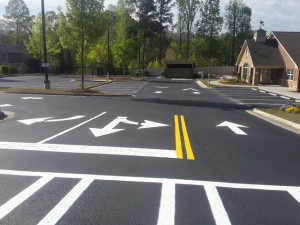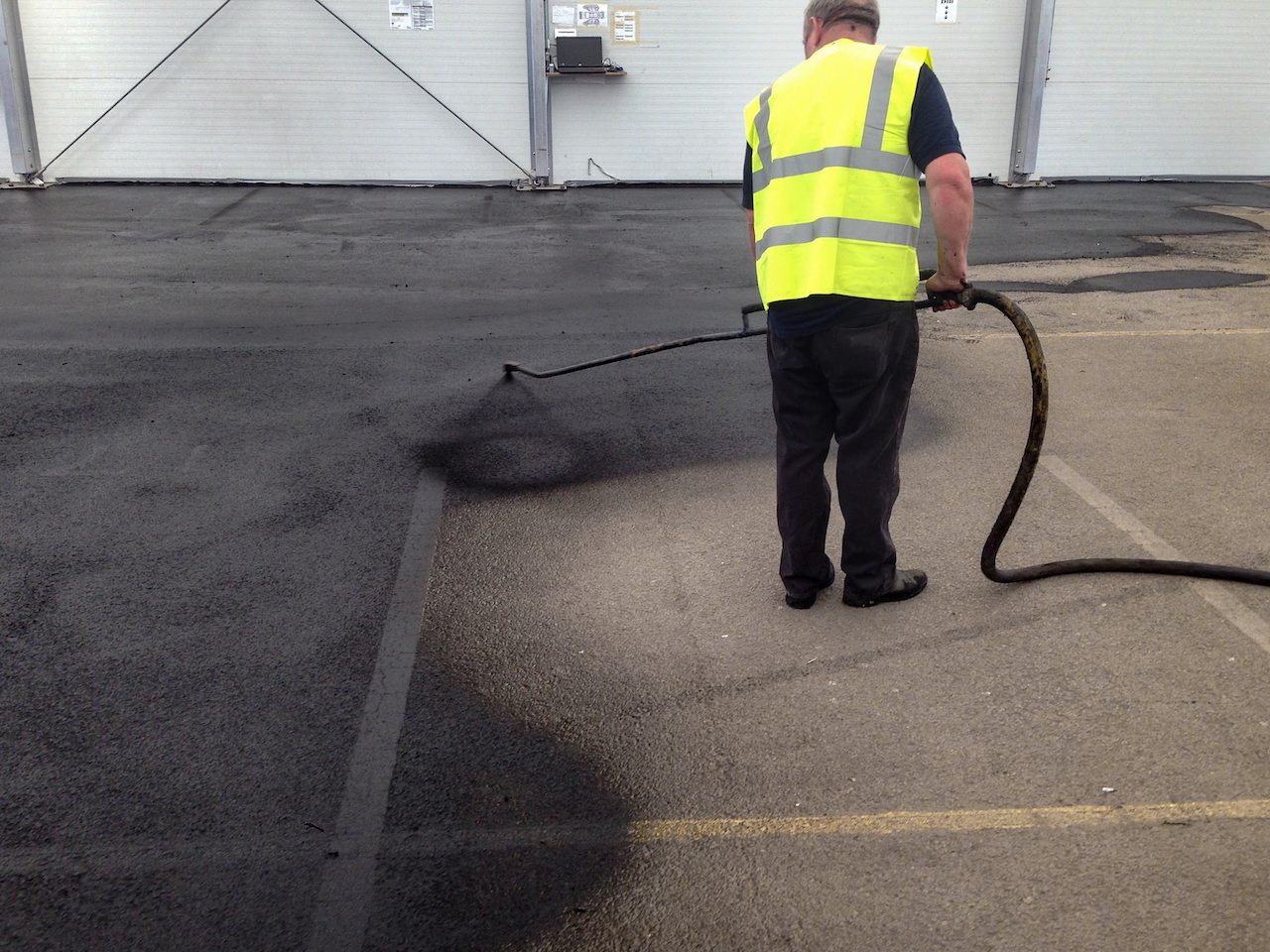
Can Humidity Affect an Asphalt Sealcoating Application?
How Does Humidity Affect a Sealcoating Application?
Most seal coatings are water-based products. To achieve high-quality results, the sealcoat material needs to dry at the rate specified by the manufacturer of the product. When the humidity is high, the sealant will dry too slowly and not cure properly. Sealants dry from the top down, so when exposed to high humidity, the surface may appear dry, but the underlying layers remain wet. If the pavement is returned to service too soon, damage may result to the sealcoating and/or the material may be tracked into unwanted locations.
How Is a Sealant Application Affected by Temperature, Sunlight and Wind Speed?
Although asphalt striping, curb painting and pavement markings can also be affected by humidity, temperature, wind and sunlight, sealants are even more sensitive to the natural elements. The primary cause of this sensitivity has to do with the physical laws of evaporation.
• Temperature: Ambient and surface temperatures are important factors that can affect the quality of a seal coating job. Sealcoat should not be applied if the ambient temperature is not at least 50 degrees and rising. Similarly, sealants should not be applied if the ambient temperature is above 90 degrees without cooling the surface temperature first. As you probably know, the hotter the temperature, the faster evaporation will occur. If it is too hot, the top layer will dry too quickly, forming an unstable shell over the wet sealant that is trapped underneath. If it is too cool, the rate of evaporation will be too slow for the sealant to cure in a timely manner.
• Sunlight: Ultraviolet radiation is needed for sealants to release moisture and cure properly, so exposure to direct sunlight is important to ensure the success of the job. Applying a sealant on cloudy days or to areas that never receive sunlight can negatively affect the integrity of the material unless special additives are incorporated in the sealant mix.
• Wind: If the air over the sealant is moving, water molecules that have evaporated from the sealant can be blown away so that more moisture can escape. However, if the wind speed is too great, it can impact the job in two ways. First, a strong wind can blow sealant onto surrounding structures or vehicles. Second, the stronger the wind, the faster the water in the top layers of the sealant will evaporate. When strong winds are combined with high temperatures, the faster rate of evaporation can prevent aesthetically pleasing, long-lasting results.
Why Should You Seal an Asphalt Pavement?
Periodic sealing of an asphalt pavement is necessary to maintain and protect the surface of the pavement and its underlying structure. Without a sealant, the pavement would quickly begin to deteriorate due to oxidation and exposure to UV rays from the sun. Cracks will develop early in the pavement’s life, allowing water to infiltrate and eventually damage the pavement’s foundation. Potholes will appear and require costly repairs before leading to additional major damage. Oil and other contaminants will quickly eat away at the asphalt, and the useful life of the pavement can be reduced by 50% or more.
A professional application of sealant is a highly economical procedure, but it is also one of the best asphalt paving services you will find for prolonging the useful life of your pavement. The first application of a sealant should occur after the pavement has fully cured. Asphalt contractors typically recommend that the job should be repeated about every two years, but your pavement may need fresh sealant less often or more frequently.
At MH Greeson, we specialize in maintenance for asphalt pavements, including crack repairs, traffic sign installation, asphalt patching, parking lot striping, bollard installation and pavement marking. We are known for the exceptional quality of our work, our integrity, our reasonable prices, and our dedication to providing every customer with exceptional, professional service. If you are interested in receiving a free quote, simply call us at 770-335-2983 or fill out the online form.




